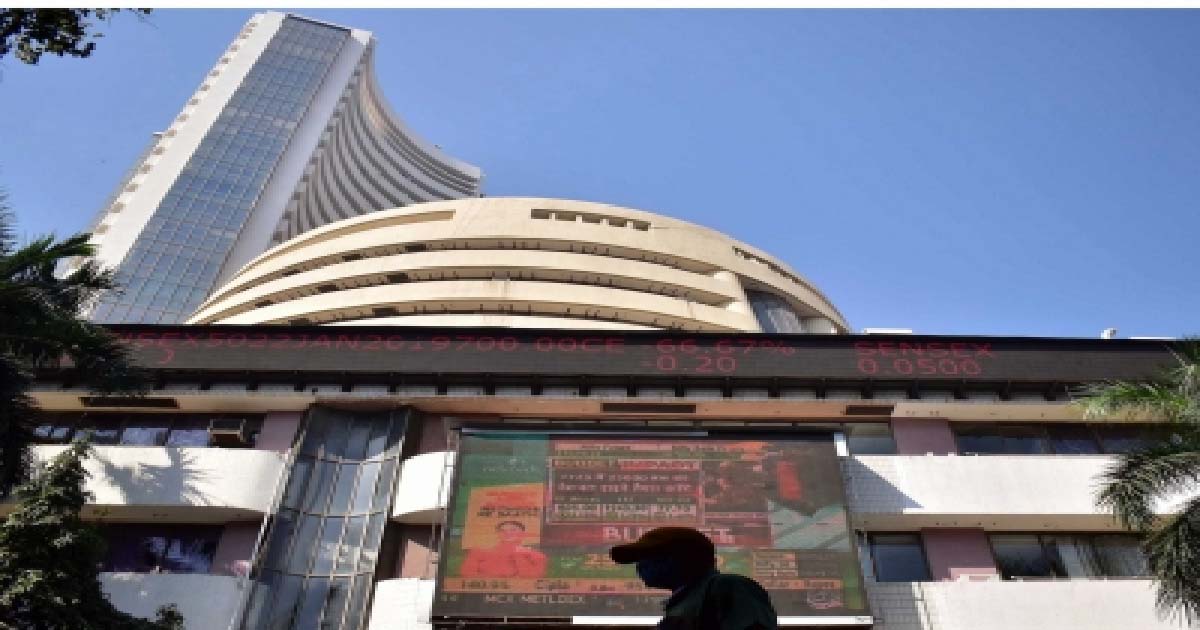Business
Govt to further strengthen Jan-Dhan Yojana as it completes 7 years of implementation

Government proposes to further strengthen its national mission on financial inclusion under the Pradhan Mantri Jan-Dhan Yojana (PMJDY) by extending facilities for micro insurance including life and accident cover for all account holders under the scheme.
In its eighth year of operation, the Union government is set to further enrich the scheme by bringing account holders under digital transaction platform by including RuPay debit card usage amongst PMJDY accountholders through creation of acceptance infrastructure across India.
Also, improved access will be provided to PMJDY account holders to Micro-credit and micro investment such as flexi-recurring deposit, etc.
The enhanced are being looked at for extending the reach of this financial inclusion programme that has grown in size over the years with total PMJDY accounts standing at 43.04 crore as of August 18. Out of this, 36.86 crore (85.6 per cent) accounts with only 8.2 per cent PMJDY accounts being zero balance accounts.
The total deposit balances under PMJDY Accounts stand at Rs 1,46,230 crore. Deposits in these have increased about 6.38 times with an increase in accounts 2.4 times between August 2015 and August 21.
“The journey of PMJDY-led interventions undertaken over a short span of 7 years has in effect, produced both transformational as well as directional change thereby making the emerging FI ecosystem capable of delivering financial services to the last person of the society-the poorest of the poor. The underlying pillars of PMJDY, namely, Banking the Unbanked, Securing the Unsecured and Funding the Unfunded has made it possible to adopt multi-stakeholders’ collaborative approach while leveraging technology for serving the unserved and underserved areas as well,” finance minister Nirmala Sitharaman said on the seventh anniversary of PMJDY.
PMJDY, which is one of the biggest financial inclusion initiatives in the world, was announced by Prime Minister Narendra Modi in his Independence Day address on 15th August 2014. While launching the programme on 28th August, the Prime Minister had described the occasion as a festival to celebrate the liberation of the poor from a vicious cycle.
Going ahead the government is looking at further strengthening the scheme with new additions. “Endeavour is to ensure coverage of PMJDY account holders under micro insurance schemes. Eligible PMJDY accountholders will be sought to be covered under Pradhan Mantri Jeevan Jyoti Bima Yojana (life cover) PMJJBY and Pradhan Mantri Suraksha Bima Yojana (accident insurance) PMSBY,” a finance ministry statement said.
Jandhan provides an avenue to the poor for bringing their savings into the formal financial system, an avenue to remit money to their families in villages besides taking them out of the clutches of the usurious money lenders. PMJDY has brought the unbanked into the banking system, expanded the financial architecture of India and brought financial inclusion to almost every adult, the statement added.
As informed by banks, about 5 crore PMJDY accountholders receive direct benefit transfer (DBT) from the Government under various schemes.To ensure that the eligible beneficiaries receive their DBT in time, the finance ministry takes active role in identification of avoidable reasons for DBT failures in consultation with DBT Mission, NPCI, banks and various other Ministries. With close monitoring in this regard through regular VCs with banks and NPCI, the share of DBT failures due to avoidable reasons as a percentage of total DBT failures has decreased from 13.5 per cent (FY 19-20) to 5.7 per cent (FY 20-21), the finance ministry said.
Business
Indian stock markets end higher after two days of losses

Mumbai, Nov 3: Indian equity markets ended a volatile session on a positive note on Monday, snapping a two-day losing streak.
Gains in real estate and state-owned bank stocks helped lift the indices despite early weakness.
After opening lower, the Sensex recovered to touch an intra-day high of 84,127 before closing 39.78 points, or 0.05 per cent, higher at 83,978.49.
The Nifty also gained 41.25 points, or 0.16 per cent, to end at 25,763.35.
“The Nifty oscillated between 25,700 and 25,800 through the day, showing resilience after briefly dipping below the October 24 low of 25,718,” analysts said.
“The zone between 25,660–25,700 once again acted as a strong demand pocket, helping the index recover intraday losses and maintain a constructive tone ahead of key global data releases,” they added.
Among the Sensex stocks, Maruti Suzuki fell over 3 per cent and was among the top losers along with Titan Company, BEL, TCS, ITC, NTPC, Bajaj Finserv, Tata Steel and tech Mahindra.
On the other hand, Mahindra & Mahindra, State Bank of India, Tata Motors Passenger Vehicles, and HCL Tech were the major gainers.
In the broader markets, the Nifty MidCap index rose 0.77 per cent, while the Nifty SmallCap index advanced 0.72 per cent, showing strength beyond the frontline stocks.
Among sectoral indices, PSU bank shares led the rally, with the Nifty PSU Bank index climbing 1.92 per cent.
Bank of Baroda surged 5 per cent, while Canara Bank, Bank of Maharashtra, Bank of India, and Indian Bank also gained.
The Nifty Metal and Realty indices also added up to 2 per cent each.
Meanwhile, the FMCG, Private Bank, and IT indices slipped up to 0.4 per cent, capping the market’s overall gains.
Analysts said that despite mixed global cues and cautious investor sentiment, buying in select sectors helped the markets end the day in the green.
“The domestic market ended on a marginal positive note as profit booking was visible at the higher levels due to the absence of fresh domestic triggers,” market watchers said.
“While the broader market outperformed since the quarterly earnings are steering investors’ preference to take a short- to medium-term view,” they mentioned.
Business
India’s manufacturing growth picks up in Oct due to robust domestic demand: PMI data

New Delhi, Nov 3: India’s manufacturing sector growth surged in the month of October, fuelled by strong domestic demand, GST 2.0 reforms, productivity gains and increased technology investments, a report said on Monday.
The HSBC India Manufacturing Purchasing Managers’ Index (PMI) rose to 59.2 in October from 57.7 in September, according to data compiled by US-based financial intelligence provider S&P Global.
The increase stemmed from quicker growth in new orders and factory output at the beginning of the third financial quarter, driven by boost in advertising and recent GST reforms, the report said.
The expansion rate matched levels seen in August, which was one of the strongest in the last five years, it indicated.
A reading above 50 indicates economic expansion, while one below 50 shows contraction in the manufacturing, services, or construction sectors. A reading of exactly 50 signifies flat activity.
The manufacturing PMI acceleration comes from robust end-demand fuelled expansions in output, new orders, and job creation, said Pranjul Bhandari, chief India economist at HSBC.
Meanwhile, input prices moderated in October while average selling prices increased as some manufacturers passed on additional cost burdens to end-consumers, Bhandari added.
Despite input cost inflation easing to an eight-month low, output charge inflation remained at its highest level in 12 years for the second consecutive month.
Companies reported passing on higher freight and labour costs to customers, while strong demand allowed them to maintain elevated prices.
Domestic sales growth outpaced export orders, which grew more slowly even with some improvement in overseas demand. Employment creation continued for the twentieth straight month in October, with hiring remaining moderate and largely consistent with September’s levels, it noted.
Manufacturers remain optimistic about future business conditions, crediting their optimism to GST reforms, capacity expansion, and stronger marketing efforts, the report noted.
Business
Commercial LPG cylinder prices reduced across metros from November 1

New Delhi, Nov 1: State-run oil marketing companies have reduced commercial LPG cylinder prices across metros, offering a slight relief to businesses, starting from Saturday.
The move will provide marginal relief to thousands of small and medium-sized businesses.
According to the latest revision announced by state-run oil marketing companies (OMCs), the 19-kg commercial LPG cylinder will now cost Rs 1,590.50 in Delhi, reflecting a Rs 5 cut from the previous rate of Rs 1,595.50.
With the highest drop of Rs 6.50 per cylinder among the metros, the charge in Kolkata will now be Rs 1,694 per cylinder. Chennai will now charge Rs 1,750 (down Rs 4.50), while Mumbai now charges Rs 1,542 (down Rs 5).
For businesses that depend significantly on LPG for their everyday operations, like restaurants, hotels, and catering services, the most recent revision provides a small reprieve following a hike of Rs 15.50 that was put into effect late in September.
However, domestic LPG prices have not changed and are the same in every city.
Earlier in September, OMCs had reduced the price of commercial LPG gas cylinders by Rs 51.50. Following the revision, a 19-kg commercial LPG cylinder in Delhi was available at Rs 1,580.
Earlier, OMCs had reduced the price of a 19 kg commercial LPG gas cylinder by Rs 33.50. Before that, prices had been reduced by Rs 58.50 on July 1.
Earlier in June, oil firms had announced a Rs 24 cut for commercial cylinders, setting the rate at Rs 1,723.50. In April, the price stood at Rs 1,762. February saw a small Rs 7 reduction, but March reversed this slightly with a Rs 6 increase.
Meanwhile, the Centre had announced to provide 2.5 million free LPG connections under the Pradhan Mantri Ujjwala Yojana (PMUY) during the festival season.
-

 Crime3 years ago
Crime3 years agoClass 10 student jumps to death in Jaipur
-

 Maharashtra1 year ago
Maharashtra1 year agoMumbai Local Train Update: Central Railway’s New Timetable Comes Into Effect; Check Full List Of Revised Timings & Stations
-

 Maharashtra1 year ago
Maharashtra1 year agoMumbai To Go Toll-Free Tonight! Maharashtra Govt Announces Complete Toll Waiver For Light Motor Vehicles At All 5 Entry Points Of City
-

 Maharashtra1 year ago
Maharashtra1 year agoFalse photo of Imtiaz Jaleel’s rally, exposing the fooling conspiracy
-

 National News1 year ago
National News1 year agoMinistry of Railways rolls out Special Drive 4.0 with focus on digitisation, cleanliness, inclusiveness and grievance redressal
-

 Maharashtra12 months ago
Maharashtra12 months agoMaharashtra Elections 2024: Mumbai Metro & BEST Services Extended Till Midnight On Voting Day
-

 National News1 year ago
National News1 year agoJ&K: 4 Jawans Killed, 28 Injured After Bus Carrying BSF Personnel For Poll Duty Falls Into Gorge In Budgam; Terrifying Visuals Surface
-

 Crime1 year ago
Crime1 year agoBaba Siddique Murder: Mumbai Police Unable To Get Lawrence Bishnoi Custody Due To Home Ministry Order, Says Report












